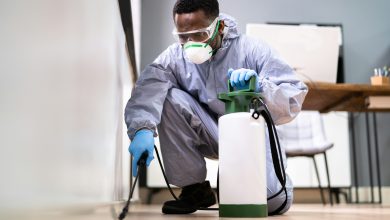
You probably think a lot about the cleanliness of your home’s surfaces, but have you considered the air you breathe? Indoor air quality can be surprisingly poor, carrying hidden pollutants that impact your health over time. Everything from lingering mold to harsh chemicals can be circulating in your home’s air. The only way to know for sure what you’re dealing with is through air quality testing from specialists such as etsairquality.ie.
5 Common Signs Your Air Quality Needs Testing
Persistent Musty Odors: A persistent, slightly damp odor—even if you see no obvious leaks—often indicates hidden mold growth. Mold isn’t just unsightly, it releases spores that can seriously irritate your lungs.
Visible Mold Growth: Sometimes the culprit is in plain sight. Any dark or discolored spots on walls, especially in damp areas like bathrooms or basements, warrant a closer look. Don’t dismiss it as “just a stain.” Mold needs to be addressed, and testing will pinpoint the type you have.
Exacerbation of Allergy and Asthma Symptoms: If you find yourself increasingly reaching for allergy meds or your inhaler, especially indoors, it’s not just the season. Dust mites, pet dander, and pollen can get trapped in your home’s air, worsening your symptoms.
Elevated Indoor Humidity Levels: Consistently high humidity fosters mold growth and attracts dust mites. Pay attention to window condensation, a sticky feeling in the air, or if your AC runs constantly without the house feeling cooler.
Recent Renovations or New Construction: Even months after new construction or a remodel, lingering chemicals from paint, glues, and building materials can still off-gas, degrading indoor air quality. This is especially important to consider if you have young children or anyone with respiratory issues.
DIY Testing vs. Professional Services
There’s a range of DIY air quality testing kits on the market. These can be useful for detecting the presence of things like radon gas or general mold levels. However, if you suspect a serious issue, or need precise analysis of specific contaminants, the DIY route has limitations.
A professional test is the best option when you have strong concerns, are dealing with potential legal situations (like real estate transactions), or want a detailed assessment before a major home purchase. For the most accurate and actionable results, professional testing provides peace of mind.
What a Professional Indoor Air Quality Test Involves
Here’s what sets professional testing apart from basic DIY kits:
In-Depth Visual Inspection
A certified technician will conduct a thorough walkthrough of your property. They’re not just looking at the obvious, they’re trained to spot subtle signs like water intrusion points, inadequate ventilation in specific areas, or potential sources of pollutants.
Specialized Sampling
Unlike DIY tests, professionals have equipment to sample and measure a vast range of pollutants. This might include air sampling for VOCs (volatile organic compounds), particulate matter of various sizes, specific mold species, and more. Knowing exactly what’s in your air is vital for the right solution.
Laboratory Analysis
Samples are carefully analyzed in a lab. This provides not only a confirmation of the presence of a pollutant but also its precise concentration levels. This objective data is crucial for determining if the levels are actually unsafe and what remediation methods are necessary.
Detailed Report & Recommendations
You don’t just get a basic “pass/fail” result. A professional assessment includes a thorough report detailing the identified issues, the severity, and, most importantly, specific steps to improve your air quality. This can be invaluable for navigating remediation or guiding purchasing decisions.
Steps to Improve Indoor Air Quality After Testing
Test results aren’t meant to just sit in a drawer. Here’s how to turn that knowledge into a healthier home:
1. Address the Source: Your test report will pin down the root causes of poor air quality. Whether it’s professional mold remediation, improved ventilation, or changing a specific building material, don’t skip this crucial step.
2. Air Purifiers as Support: A purifier with a HEPA filter can significantly reduce airborne particles. Important note: purifiers mainly supplement other fixes, they don’t fully address the underlying cause of air quality issues.
3. HVAC Maintenance: Change those filters regularly. Clogged filters worsen airflow and can harbor contaminants themselves. Consider having your air ducts professionally cleaned if it hasn’t been done in a while.
4. Rethink Cleaning & Building Products: Opt for low-VOC paints, cleaners, and furnishings whenever possible. These release fewer harmful chemicals into your air over time.
5. Reduce Indoor Smoking/Incense: These are major culprits of particulate matter. Even with windows open, the residue lingers on surfaces and continuously pollutes the air.
Conclusion
Understanding your indoor air quality is an often-overlooked aspect of health and well-being. While it might feel overwhelming at first, remember that knowledge is power. Testing gives you the roadmap to create a cleaner, safer home environment. Don’t hesitate to address any issues uncovered by your test—the investment in your air quality is an investment in your health.



